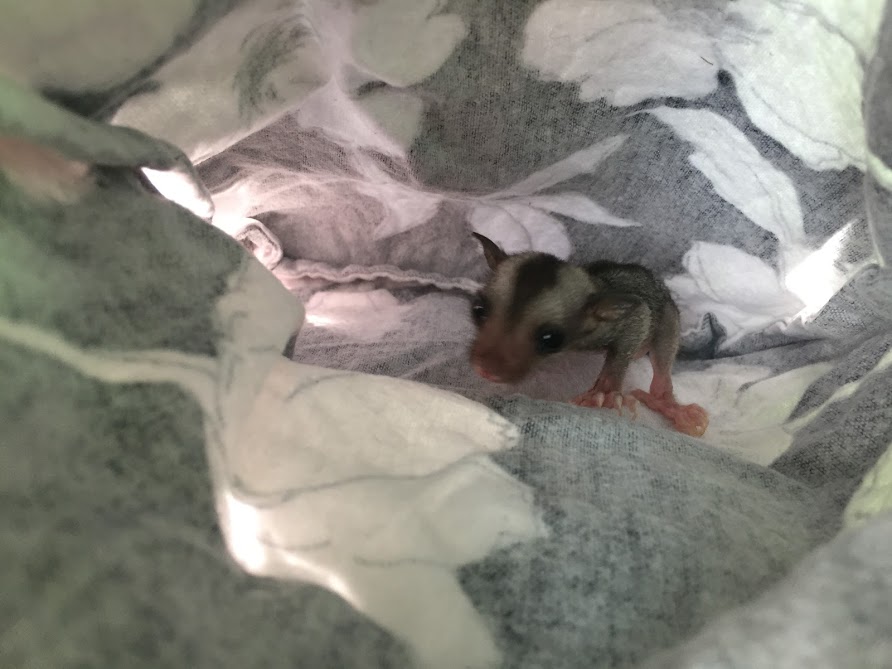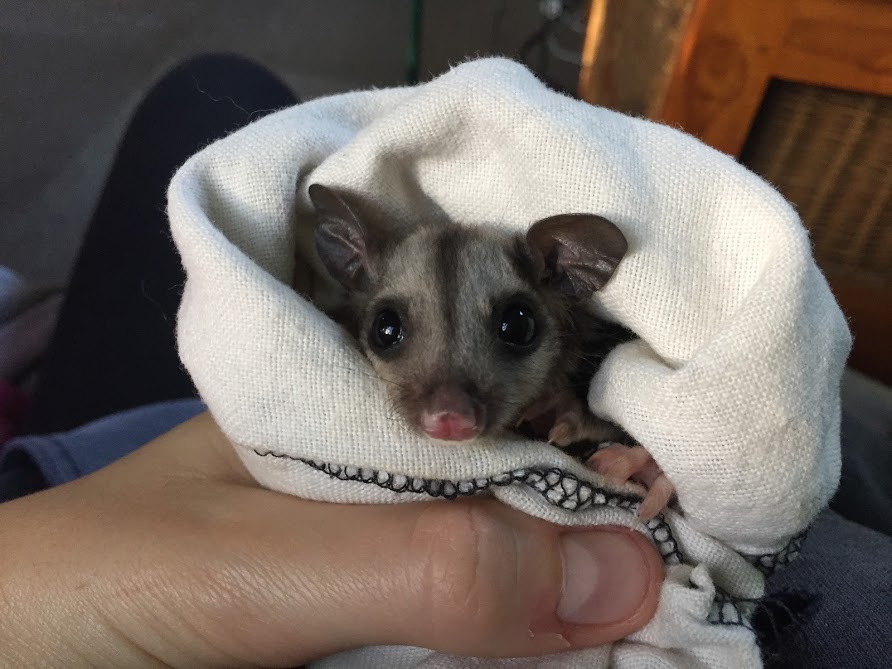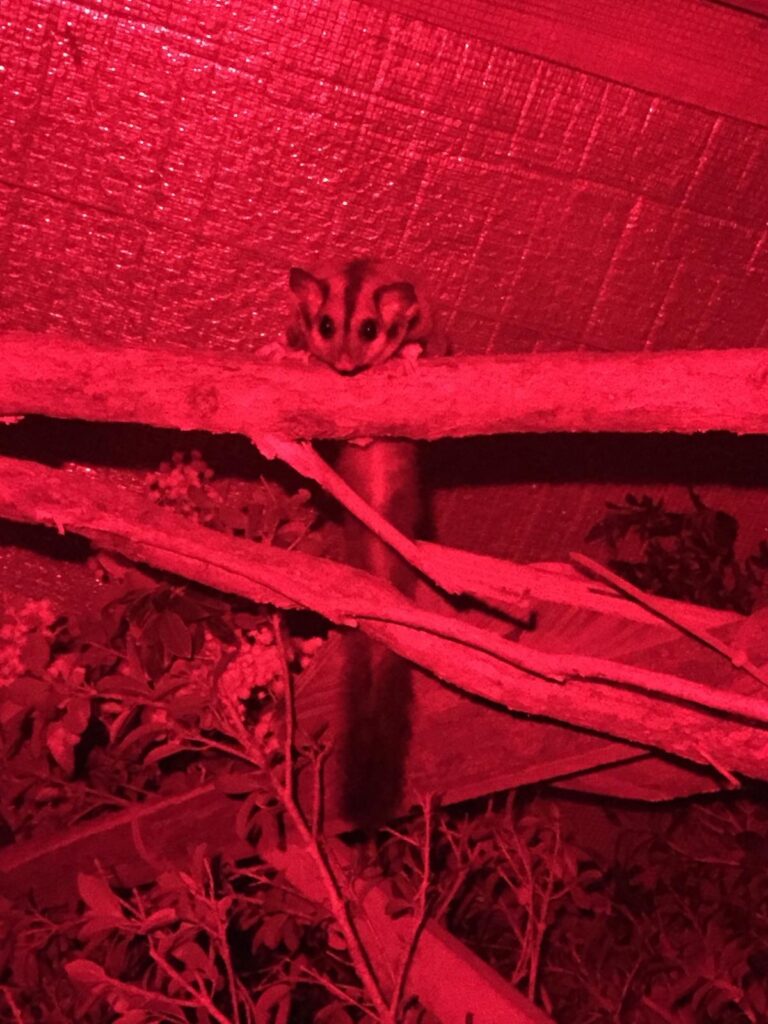Maple, the little grey glider, came into care with us as a minuscule velvet joey, weighing only 11g. her eyes were still shut. Abi took on the main care of Maple… her first little glider Bub!
Maple needed to be fed a small amount of milk formula six times a day – including at 3am! She would lap from a spoon, then promptly fall to asleep.

Initially we were worried that she wasn’t gaining enough weight for her stage of development. But she was a strong little thing and, once she opened her eyes, she started to put on weight at a normal rate. As soon as she was big enough to eat mealworms she started to put on three grams a day and get fluffier and fluffier.

It’s hard to tell Squirrel and Sugar gliders apart as babies, because they are near identical. Adult Squirrel gliders are almost twice the size as Sugars, with a much fluffier tail, but when they are young the distinction can be subtle. Maple’s tail is now extremely fluffy, and she has only just started to display adult behaviour so we are now pretty sure she is a Squirrel.

Each day she gets a little bigger and a little more adventurous. First taking tentative steps after feeding, and now leaping across her enclosure into her nest box. She has now moved to an outside aviary so that she can start to test out her patagium – the fur covered membrane that gliders have which connects their ankle to their wrist, allowing them to paraglide through the treetops like furry astronauts.

It is rare to catch a wild glider mid-glide, let alone at a time that you have a tape measure in your pocket, and so the jury is out as to just how far they can glide. But some have been observed to glide at least fifty meters between trees, perhaps even further.
We have some glider families living wild at our sanctuary, and because Maple is female we hope it will be easy for her to join a glider troupe when she is released. Squirrel gliders are arboreal and live in tree hollows, in family groups usually made up of a male, two females, and their young.
Squirrel gliders are threatened by habitat loss and fragmentation. At Araucaria Sanctuary, we are planting natives to link up our land and trees with the forest along the ridge line, so that we can act as a wildlife corridor. We put up nest boxes so that gliders, possums, and other animals can find shelter in our new growth forest. All the species that are released will hopefully repopulate this corridor and return to the forest.
Abi has done a FANTASTIC job raising little Maple from such a young age. It is so rewarding to see her now approaching release.

